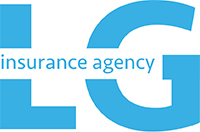When dealing with something as important as protecting one’s assets, it’s very important to have a full understanding of the terminology involved. Here are a few “insurance-speak” words you should know when you go through the quoting process.
Actual cash value
The original value of your vehicle less depreciation you’ll receive for a total loss.
Additional insured
A licensed driver in the same household as the policyholder, covered under the same policy.
Anti-theft recovery system
A hidden electronic device used to locate your vehicle if it is stolen that may qualify the policyholder for a discount.
At-fault accident
An automobile which is the legal responsibility of the driver. Liability insurance pays for the injuries or property damage of others and legal defense costs up to the policy limit.
Auto insurance claim
A formal request to the insurance company for a possible loss or for reimbursement for the costs associated with repairs, injuries, and other items.
Collision coverage
The portion of insurance that pays for repairs to your vehicle if you have an at-fault accident or you hit an object or roll over and it only involves your vehicle.
Comprehensive coverage
The portion of insurance that pays for non-collision claims due to theft, falling objects, fire, hitting an animal, and other risks listed on your policy.
Continuously insured
The number of years you have been insured with one or more insurance companies without a lapse in your auto insurance coverage.
Covered incident
A risk under your policy the insurance company will cover and pay.
Declarations page
A policy page with important details such as liability limits, included coverage, vehicle information, and insured drivers. This is good to have on-hand when requesting a quote.
Deductible
The amount you agree to pay out of pocket before your insurance coverage kicks in. Generally, higher deductibles translate to lower premiums, because you assume more financial risk. However, the insurer pays less if you file a claim.
Depreciation
Your vehicle’s reduction in value due to age, wear and tear, and obsolescence.
Effective date
The date your policy starts to protect you and your vehicle.
Exclusion
A risk under your policy the insurance company will not cover and pay.
Full coverage car insurance
An auto insurance policy that offers coverage beyond liability insurance, such as comprehensive and collision.
Gap coverage
Coverage that pays the higher amount between your vehicle’s value and your outstanding auto loan, if your vehicle’s stolen or totaled in an accident.
Indemnity
The amount your insurer pays you or others after an accident that caused damage to property or people.
Liability insurance
Coverage that pays for the injuries and property damage to others when you are at-fault in an accident. This coverage also pays for legal defense costs if you’re sued.
Limit
The maximum amount your policy will pay for a given accident. Each coverage type has its own limits.
Medical payments coverage (MedPay)
Pays for treatments for injuries for you and your passengers up to the policy limit, regardless of who is at-fault.
Personal injury protection (PIP)
Provides MedPay coverage and additional items such as lost income and physical therapy.
Primary use
The way you use your vehicle most often, such as for pleasure, business, or commuting.
Premium
The amount you pay for your auto insurance by annual, bi-annual, or monthly payments.
Replacement cost
Coverage that pays for the replacement of damaged, destroyed, or stolen property with a new item, without depreciation.
State-required minimum coverage
The legally required minimums for drivers in New Jersey are $15,000 bodily injury liability per person, $30,000 bodily injury liability per accident, $5,000 property damage liability per accident, and $15,000 uninsured motorist bodily injury.
Minimums do not provide sufficient coverage to protect you well if you’re involved in a major accident.
Total loss
An insurance adjuster determines the level of damage after a loss. If they believe it is more than 75 percent of its actual cash value, they declare it a total loss and the insurance company pays out an amount calculated by the adjuster.
Underwriting
The insurance company’s process of evaluating your risk based on factors such as your age, credit, driving history, vehicle, and location. They use this information to calculate your insurance rates.
Uninsured motorist coverage
This coverage protects you if you’re in an accident with a driver who lacks car insurance or has insufficient insurance. Protection may cover treatment for injuries for you and your passengers and/or property damage.


